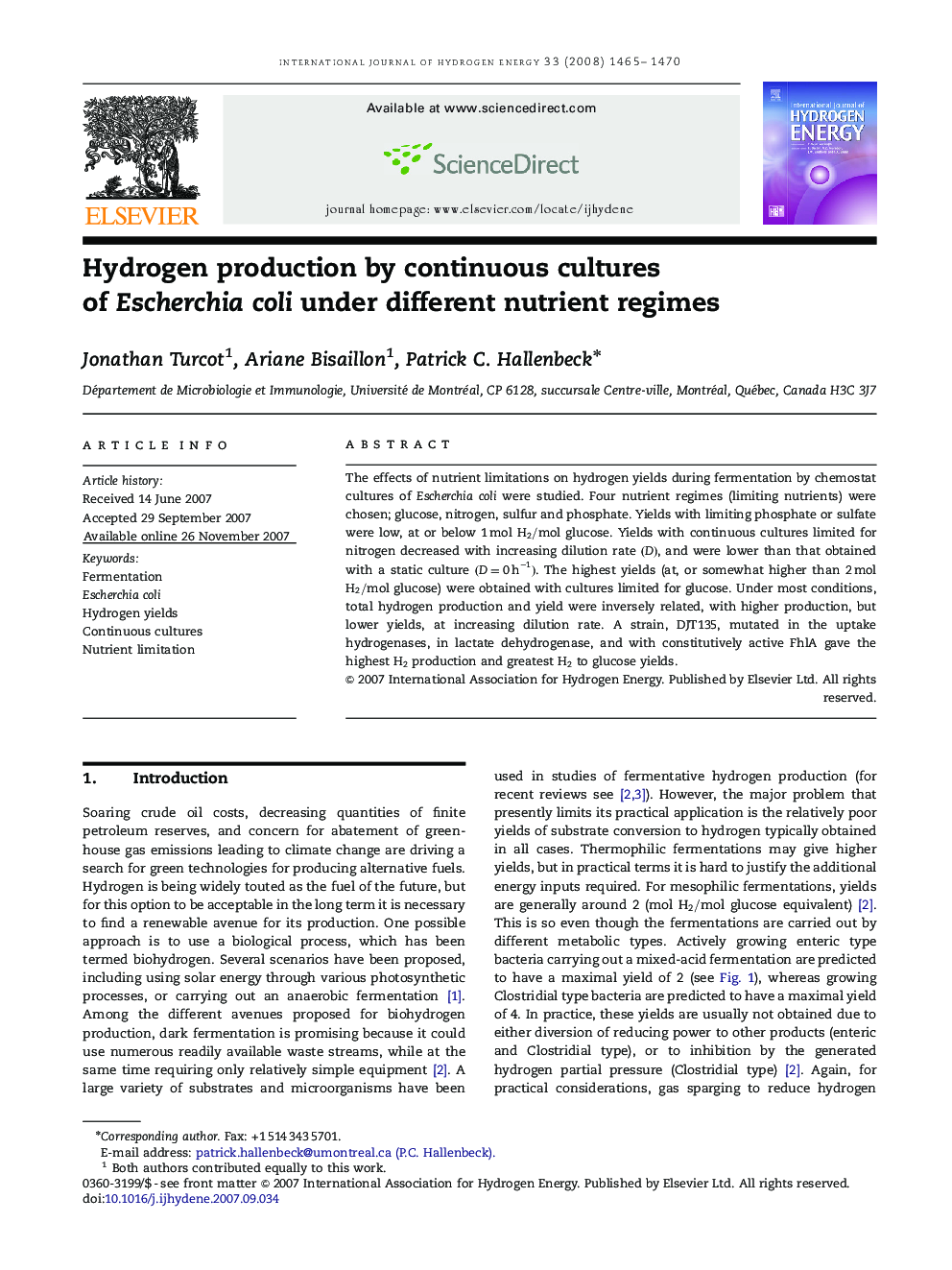| Article ID | Journal | Published Year | Pages | File Type |
|---|---|---|---|---|
| 1281759 | International Journal of Hydrogen Energy | 2008 | 6 Pages |
Abstract
The effects of nutrient limitations on hydrogen yields during fermentation by chemostat cultures of Escherchia coli were studied. Four nutrient regimes (limiting nutrients) were chosen; glucose, nitrogen, sulfur and phosphate. Yields with limiting phosphate or sulfate were low, at or below 1Â mol H2/mol glucose. Yields with continuous cultures limited for nitrogen decreased with increasing dilution rate (D), and were lower than that obtained with a static culture (D=0h-1). The highest yields (at, or somewhat higher than 2Â mol H2/mol glucose) were obtained with cultures limited for glucose. Under most conditions, total hydrogen production and yield were inversely related, with higher production, but lower yields, at increasing dilution rate. A strain, DJT135, mutated in the uptake hydrogenases, in lactate dehydrogenase, and with constitutively active FhlA gave the highest H2 production and greatest H2 to glucose yields.
Related Topics
Physical Sciences and Engineering
Chemistry
Electrochemistry
Authors
Jonathan Turcot, Ariane Bisaillon, Patrick C. Hallenbeck,
